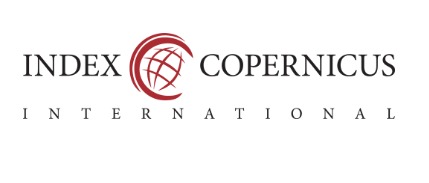International student recruitment in policy and practice: A research from Turkey
Abstract
Aim: This research aims to make projections about the efforts. Turkish universities are making to attract international students. Some nations like Turkey are actively trying to attract more foreign workers. Managers of international student offices are the focus of the research because they are both policymakers and practitioners and, as a result, have unique perspectives on international recruitment.
Methodology: Data were collected from the International Office Directors of Turkish universities via a survey conducted between December 2014 and February 2016. The online survey tool Survey Monkey was used to collect responses.
Findings: According to the research conducted, international student offices in Turkish universities are relatively new establishments that lack authority and personnel. In addition, the board members all agreed that universities do not provide enough funding for international outreach. Similarly, many higher education institutions do not systematically plan for international students.
Implications/Novelty: There are still significant obstacles that must be carefully addressed before Turkish universities can truly reap the benefits of their increased international student enrollment. Insights into how to solve these issues have been provided by this study, which has brought to light the issues that international students face.
References
Kondakci, Y. 2011. “Student Mobility Reviewed: Attraction and Satisfaction of International Students in Turkey.” Higher Education 62(5), 573-592.
Mahmut, O. 2012. “International Students in Turkey.” Journal of Higher Education and Science 2(1): 10-13.
OECD. 2014. Education at a Glance, 2014: OECD Indicators. Paris, France: OECD.
Ozoglu, M., Gur, B. S., and Coskun, I. 2012. International Students in Turkey: In the Light of Global Trends. Ankara: SETA.
Ozyurek, H., and Uluturk, Y. 2016. “Flexible Budgeting Under Time-Driven Activity Based Cost as a Tool in Management Accounting: Application in Educational Institution.” Journal of Administrative and Business Studies 2(2): 64-70.
Snoubar, Y., and Celik, G. 2013. “Cultural Differences of International Students in Turkey and Problems They Experience.” Procedia-Social and Behavioral Sciences 106, 759-766.
Stensaker, B., Frolich, N., Gornitzka, A., and Maassen, P. 2008. “Internationalisation of Higher Education: The Gap between National Policy-Making and Institutional Needs.” Globalisation, Societies and Education 6(1): 1-11.
Turkish Ministry of Development. 2015. Turkish Universities in the Framework of the Internationalization of Higher Education Project for the Establishment of Gravity Center for International Students. Ankara, Turkey: T.C Ministry of Development, Development Research Center.
UAK. 2016. Higher Education and Internationalization in Turkey. Ankara, Turkey: University Council.
Van Damme, D. 2001. “Quality Issues in the Internationalisation of Higher Education.” Higher Education 41(4): 415-441.
YOK. 2014. “Growth, Quality and Internationalization: A Roadmap for Figher Education in Turkey.” YOK Publication No: 2014/2, Ankara, Turkey: Council of Higher Education.

This work is licensed under a Creative Commons Attribution-NonCommercial 4.0 International License.












.png)










